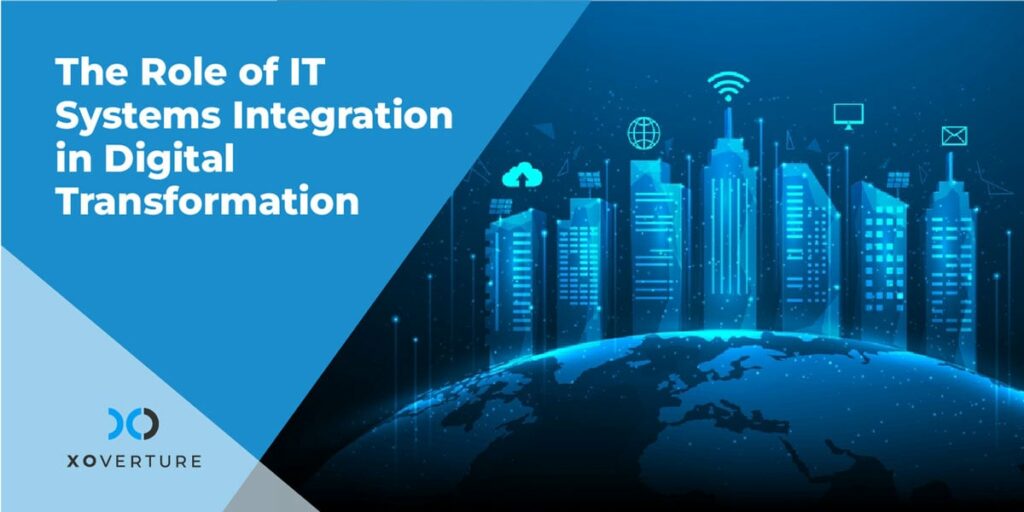There are plenty of reasons why a company should update its IT setup. Doing so makes you more flexible, adaptable, and able to grow. Moreover, this is a crucial measure to boost your business’s productivity, efficiency, and save funds. When companies keep using old, different, and outdated systems they cannot enjoy the perks that come with modernization. To thrive and expand in the digital era, it’s essential to transition to the latest IT systems and embrace the digital approach for business success and growth.
In this post, we’ll discuss the role of IT systems integration in digital transformation and uncover how combining different parts of your technology can lead to a brighter future for your Los Angeles business.
What is System Integration?
System integration (SI) brings together different systems, software, apps, tools, and parts into one organized system so that they can all work together smoothly and in a coordinated way. It connects all the tasks a business does and offers a single hub for communication with both inside & outside partners.
In the tech world, system integration involves bringing different software, databases, devices, and networks together so they can operate seamlessly and share information.
Why & When Do You Need Integration?
In today’s highly connected world, organizations often use many systems and technologies for different tasks. But they rely on separate systems which cause problems like data differences, ineffectiveness, and lack of coordination between departments.
System integration is useful for resolving issues by ensuring different systems work together smoothly and seamlessly which helps in better decision-making, happier customers, increased output, and enhanced efficiency.
System integration is suitable for large and intricate businesses that:
- Operate distinct processes for various business activities.
- Employ extended communication cycles to link internal teams and outside partners.
- Utilize multiple software for automating business tasks.
- Address industry-specific needs and challenges.
- Handle data from various sources.
Benefits of IT System Integration for Los Angeles Businesses
Modern integration can make your life easier by offering efficient operations and enhanced security for your business. There are tons of other benefits your business can get from IT systems integration, let’s check them out.
Scalability: Integration supports growth and helps your systems to adapt and expand seamlessly.
Innovation: Integrated platforms enable the incorporation of innovative technologies and solutions.
Data Accuracy: Integrated systems ensure consistency and accurate data flow, eliminating errors that took place at the time of manual data entry.
Cost Savings: Integration helps reduce costs over time by eliminating repetitive tasks by using better resources.
Efficiency: Integration streamlines operations by eliminating duplication and reducing manual efforts and helps make the process smooth and quick.
Simpler Setup: Integration makes things simple by linking different parts into one streamlined organized form.
Competitive Edge: Businesses using integrated systems tend to be faster and more flexible compared to others.
Real-time Insights: Integration provides real-time access to data and gives you quick insights into business performance.
Types of System Integration
Electronic Document Integration (EDI)
No matter what kind of business you’re in, one thing that is common between all businesses is tons of paperwork to deal with, like bills, orders, and employee info. EDI is a helpful tool for businesses. It helps them easily share electronic papers instead of using lots of paper and doing things manually. This makes work smoother and less messy.
Data Integration
Nowadays, most companies keep their data in different places on multiple sources and forms due to distinct reasons. Data Integration (DI) helps bring all this information together, making it work well and look the same. This helps organizations make better decisions and do their work better too.
Legacy Systems Integration
Often using an old-fashioned computer, like outdated software or hardware, can slow down your productivity and make it hard to move to newer technology. But, just like fixing up an old car, we can connect these old systems with new ones to make them work together. This helps us use what we have from the past while also using modern technology for the future.
Enterprise Application Integration (EAI)
In today’s business world, companies use different apps for performing their usual tasks such as managing customers, supply chains, and finances. But these apps often don’t work well together and cause problems which makes teamwork hard.
Enterprise Application Integration (EAI) is a smart solution that fixes issues by helping the apps communicate and share data to make business processes smoother and teamwork better.
Wrap up:
When Los Angeles businesses undergo IT Systems Integration in Digital Transformation, they usually don’t completely rely on just one software to do everything they need. Moreover, having one software for everything is almost impossible. So, almost every business creates a plan for digital transformation and uses system integration services in some way to make things work together smoothly and efficiently.






